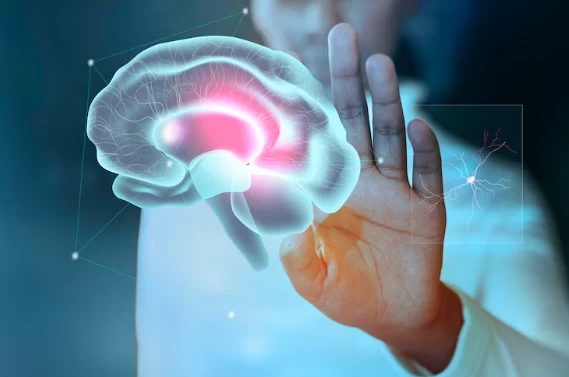
Celebral Hemorrhage
- Celebral Hemorrhage
- What Causes Brain Bleeding?
- What Are the Symptoms of Brain Bleeding?
- What are the Types of Brain Bleeding?
- What are the Treatment Methods in Brain Hemorrhage?
- What Should Be Considered in Brain Hemorrhage?
A cerebral hemorrhage, also known as an intracerebral hemorrhage, is a type of stroke that occurs when there is bleeding in the brain tissue itself. It is a serious medical condition that can be life-threatening. Cerebral hemorrhage can occur as a result of high blood pressure, which weakens the walls of blood vessels in the brain and can cause them to rupture. Other causes may include head injury, certain medications, and structural abnormalities in the blood vessels of the brain.
What Causes Brain Bleeding?
The most common causes of brain hemorrhage are:
- High blood pressure: Uncontrolled hypertension can damage blood vessels in the brain, causing bleeding.
- Traumatic injury: A blow to the head can cause bleeding in the brain.
- Aneurysm: A weak spot in a blood vessel can bulge out and eventually burst, causing bleeding in the brain.
- Arteriovenous malformation (AVM): This is a condition in which blood vessels in the brain form abnormally, which can cause bleeding.
- Blood thinners: These drugs can increase the risk of bleeding in the brain.
- Blood clotting disorders: A genetic or acquired disorder that impairs the blood's ability to clot can increase the risk of bleeding in the brain.
- Brain tumors: Tumors in the brain can press on blood vessels and cause bleeding.
- Cerebral amyloid angiopathy: This is a condition in which protein deposits in blood vessels can weaken the walls, leading to bleeding.
In some cases, the cause of brain hemorrhage may not be known.
What Are the Symptoms of Brain Bleeding?
A cerebral hemorrhage is a type of stroke that occurs when there is bleeding in the brain. Symptoms of cerebral hemorrhage may vary depending on the location and severity of the bleeding.
Some common symptoms of a brain hemorrhage include:
- Sudden severe headache
- Nausea or vomiting
- seizures
- Weakness or numbness in the face, arm, or leg (usually on one side of the body)
- Difficulty speaking or understanding spoken words
- Confusion or loss of consciousness
- Difficulty seeing in one or both eyes
- Loss of coordination or balance
- Neck stiffness or pain
- Sensitivity to light or sound
It is important to note that these symptoms may also be associated with other medical conditions. If you experience any of these symptoms, seek medical attention immediately.

What are the Types of Brain Bleeding?
Cerebral hemorrhage, also known as intracranial hemorrhage, refers to bleeding within the skull or brain tissue.
There are three main types of cerebral hemorrhage:
- Intracerebral hemorrhage (ICH): This type of hemorrhage occurs when a blood vessel in the brain ruptures and blood flows into the brain tissue. ICH is most commonly caused by high blood pressure, but can also be caused by trauma, tumors, blood clotting disorders, or medication use.
- Subarachnoid hemorrhage (SAH): This type of hemorrhage occurs when there is bleeding between the brain and the thin membrane that covers it (arachnoid membrane). SAH is most commonly caused by a ruptured cerebral aneurysm, but can also be caused by head injury, arteriovenous malformations (AVMs), or other bleeding disorders.
- Epidural hematoma (EDH): This type of bleeding occurs when there is bleeding between the skull and the outermost layer of the brain (dura mater). EDH is usually caused by a traumatic head injury in which one of the blood vessels that supply oxygen and nutrients to the brain is torn.
It is important to note that any brain haemorrhage is a serious medical emergency that requires immediate medical attention. Specific treatment will depend on the underlying cause and severity of the bleeding.
What are the Treatment Methods in Brain Hemorrhage?
Treatment of a brain hemorrhage depends on the extent and location of the hemorrhage and the patient's general health and medical history.
Some of the commonly used treatment methods for brain hemorrhage are:
- Medications: Medications are often used to manage symptoms and prevent further bleeding. This may include medications to lower blood pressure, control seizures, and reduce swelling in the brain.
- Surgery: In cases where bleeding is severe or in an area that puts pressure on the brain, surgery may be required. This may include removing the blood clot, repairing the damaged blood vessel, or relieving pressure on the brain.
- Endovascular therapy: Endovascular therapy involves the use of minimally invasive techniques such as wrapping or embolization to treat bleeding. This may be an option for smaller channels located in a hard to reach place.
- Rehabilitation: Rehabilitation is an important part of the recovery process, especially for patients who experience weakness, paralysis or other disabilities as a result of bleeding. This may include physical therapy, speech therapy, and occupational therapy.
It is important to remember that the success of treatment depends on the severity of the bleeding and how quickly the treatment is administered. Early diagnosis and treatment are critical in improving outcomes in patients with cerebral hemorrhage.
What Should Be Considered in Brain Hemorrhage?
There are several factors to consider when someone has a brain hemorrhage:
- Location: The location of the bleeding in the brain is important because it can affect different functions and cause different symptoms. For example, bleeding in the frontal lobe can affect personality and behavior, while bleeding in the cerebellum can affect balance and coordination.
- Size: The size of the bleeding is also important because larger bleeding can cause more serious symptoms and be more difficult to treat.
- Cause: It is important to identify the underlying cause of bleeding, which may include high blood pressure, trauma, aneurysm or other conditions. This information can help guide treatment and prevent future bleeding.
– Symptoms: Symptoms of a brain hemorrhage may include headache, nausea, vomiting, seizures, weakness or numbness on one side of the body, difficulty speaking or understanding spoken words, and loss of consciousness. The severity and type of symptoms can also indicate the location and extent of the bleeding.
- Treatment: Treatment of cerebral hemorrhage depends on the cause, location and extent of the hemorrhage. Treatment may include medications, surgery or other interventions to stop bleeding, reduce pressure on the brain, and prevent further damage.
- Recovery: Recovery from a brain hemorrhage may vary depending on the severity of the bleeding and the location of the bleeding. Some people may fully recover, while others may have long-term disabilities or need ongoing care and rehabilitation. Follow-up care is important to monitor for complications and meet ongoing needs.





